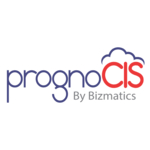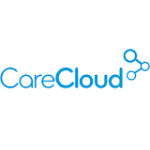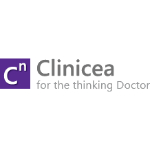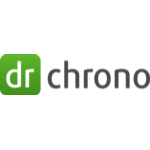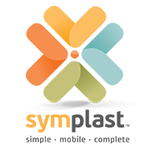TechnologyCounter provides genuine, unbiased real user reviews to help buyers make informed decisions. We may earn a referral fee when you purchase through our links, at no extra cost to you.
List of Best Plastic Surgery Software
Showing 1 - 12 of 12 productsPrognoCIS EMR PrognoCIS EMR is a electronic medical records software designed to streamline and optimize healthcare practices. With its user-friendly interface features, PrognoCIS EMR provides healthcare professionals with a comprehensive is a soluti...Read PrognoCIS EMR Reviews
CareCloud is a cloud-based healthcare software designed to streamline and simplify administrative tasks, enhance patient care, and improve overall efficiency for medical practices. With its user-friendly interface and innovative features, CareCloud i...Read CareCloud Reviews
Clinicea, a revolutionary software designed to streamline and enhance the management of healthcare practices. With its advanced features and user-friendly interface, Clinicea allows for effortless appointment scheduling, patient record management, an...Read Clinicea Reviews
drchrono EHR is a electronic health record platform that streamlines medical processes, boosts efficiency, and improves patient care. With its advanced features and user-friendly interface, drchrono is transforming the healthcare industry and enablin...Read drchrono EHR Reviews
HSTpathways is a leading software solution for healthcare facilities, specializing in streamlining administrative tasks and improving patient care. Designed to enhance efficiency and simplify operations, HSTpathways is revolutionizing the way medical...Read HSTpathways Reviews
Kareo is a and innovative healthcare technology company that offers a wide range of solutions for healthcare providers. With its user-friendly software and customizable features, Kareo aims to simplify and streamline daily tasks, improve patient care...Read Kareo Reviews
Nextech is a software revolutionizing the way businesses operate. With its advanced technology and innovative features, Nextech offers companies a seamless is a solution for all their operational needs. From managing projects to tracking inventory, N...Read Nextech Reviews
For over 15 years, PatientNOW has been revolutionizing the way healthcare businesses manage their operations and patient interactions. This innovative software offers a streamlined solution for scheduling, EHR management, marketing, and more, all in...Read PatientNOW Reviews
FaceTouchUp is an innovative software that allows you to effortlessly enhance your facial features with just a few clicks. Say goodbye to complicated and time-consuming editing tools, as FaceTouchUp offers a simple yet powerful solution for all your...Read FaceTouchUp Reviews
Accuro EMR is a electronic medical records software designed to streamline healthcare operations and improve patient care. With its user-friendly interface features, Accuro EMR simplifies documentation, scheduling, and billing processes for healthcar...Read Accuro EMR Reviews
Sevocity Premier is a dynamic and user-friendly software that revolutionizes the way medical practices manage patient information. With its robust features design, Sevocity Premier streamlines tasks such as charting, e-prescribing, and billing, allow...Read Sevocity Premier Reviews
Symplast is the all-in-one software solution designed specifically for the modern plastic and cosmetic surgery practice. With its user-friendly interface, advanced scheduling and billing capabilities, and seamless patient communication tools, Symplas...Read Symplast Reviews
- What Is Plastic Surgery Software?
- Top Reasons Why Businesses Need Plastic Surgery Software?
- What Are the Top Key Features of Plastic Surgery Software?
- What Are the Top Benefits of Plastic Surgery Software?
- What Are the Steps to Choose the Right Plastic Surgery Software?
- What Are the Types of Plastic Surgery Software for Different Industries?
- What Are the Technology Trends for Best Plastic Surgery Software?
- What Are the Deployment Options for Plastic Surgery Software?
What Is Plastic Surgery Software?
Plastic Surgery software refers to a specialized computer application developed to assist plastic surgeons in the strategic planning of surgical procedures for their patients. The system encompasses various attributes, namely three-dimensional body models, medical photographs, and patient data.
Furthermore, software for plastic surgeons technology assists medical professionals in strategizing the optimal surgical intervention, including all stages ranging from pre-operative preparation to post-operative monitoring. The program facilitates the precise identification of locations that may want attention or correction by medical professionals during a procedure.
Additionally, this technology can assist surgeons in accurately determining the specific measurements of incisions, including their length and depth, as well as the quantity of tissue that needs to be excised.
Moreover, this program has been designed with the purpose of aiding surgeons in the precise evaluation and quantification of post-operative photographs through the utilization of three-dimensional body measures.
The utilization of this software has facilitated plastic surgeons in conducting surgeries with enhanced accuracy and precision, leading to favorable outcomes for their patients.
Top Reasons Why Businesses Need Plastic Surgery Software?
1. The utilization of plastic surgery software facilitates the systematic organization and management of pertinent patient data, encompassing medical records, contact details, treatment strategies, and needed legal documentation.
2. The utilization of software for plastic surgeons technology enables medical professionals to strategically strategize, oversee, and administer surgical interventions, hence establishing well-defined anticipations for optimal results.
3. One of the key benefits of this technology is its ability to facilitate the maintenance of medical records in a paperless manner, hence enhancing the efficiency of communication among doctors, staff, and workers.
4. The utilization of this software enables offices to maintain adherence to HIPAA compliance and privacy regulations.
5. The utilization of electronic storage systems facilitates the secure retention of various forms of media, including photographs, films, and medical information.
6. The utilization of plastic surgery software facilitates the systematic organization and management of pertinent patient data, encompassing medical records, contact details, treatment strategies, and needed legal documentation.
7. The utilization of this technology enables medical professionals to strategically strategize, oversee, and administer surgical interventions, hence establishing well-defined anticipations for optimal results.
8. One of the key benefits of this technology is its ability to facilitate the maintenance of medical records in a paperless manner, hence enhancing the efficiency of communication among doctors, staff, and workers.
9. The utilization of software for plastic surgeons enables offices to maintain adherence to HIPAA and privacy regulations.
10. The utilization of electronic storage systems facilitates the secure retention of various forms of media, including photographs, films, and medical information.
11. The implementation of automated notifications can be initiated to alert individuals when it is necessary to refill their medications.
12. Online patient portals offer a streamlined method of engaging in communication with patients.
13. Patient surveys and reviews have the potential to serve as effective tools for monitoring and assessing levels of satisfaction.
14. The management of digital goods sales can be facilitated by the utilization of specialized shopping cart functionalities.
What Are the Top Key Features of Plastic Surgery Software?
1. Electronic Medical Records (EMR): The utilization of plastic surgery software facilitates the acquisition of patient data, including demographic details, medical records, and visit summaries, which are then stored in a secure database, so enabling healthcare providers to retrieve this information conveniently and remotely, regardless of the device employed.
2. Patient Scheduling System: The aforementioned functionality allows healthcare providers to generate and oversee patient appointments, while also maintaining a record of previous and forthcoming visits, as well as dispatching automated reminders for scheduled appointments.
3. Imaging Integration: The utilization of the best plastic surgery software facilitates the optimization of image management processes, guaranteeing the secure storage, remote viewing, and alteration of images.
4. Billing and Collections: This particular feature facilitates the process of verification and aids in the efficient management of money collections.
5. Patient Portal: The patient portal facilitates patients in the viewing and modification of their health records, scheduling of appointments, payment of bills, medication requests, and retrieval of documents.
6. Point-of-Care Documentation: This particular functionality aids in the reduction of medical errors by obviating the necessity for conventional paper charts, employing point-of-care documentation instead. This allows healthcare workers to accurately and expeditiously record patient treatment.
7. Reporting and Dashboard Analytics: The utilization of software for plastic surgeons enables the generation of graphical representations, tabular data, and personalized reports to effectively track patient outcomes and financial gains.
8. Regulatory Compliance: Plastic surgery software possesses the capability to guarantee adherence to HIPAA regulations through the provision of functionalities such as automated backups of patient data and the safe transmission of said data.
What Are the Top Benefits of Plastic Surgery Software?
1. Improved accuracy: Plastic surgery software offers practitioners precise measures that can be utilized to inform patient treatment decisions and facilitate surgical planning.
2. Quicker diagnoses: The utilization of surgical software has the potential to enhance the efficiency of the diagnostic process, enabling doctors to expedite their decision-making process with greater accuracy and knowledge.
3. Easier document sharing: The utilization of surgical software facilitates the seamless exchange of patient records and reports among healthcare practitioners.
4. Cost reduction: The utilization of software for plastic surgery has the potential to decrease operating expenditures by enhancing efficiency and precision across the entirety of the workflow.
5. Quality assurance: The utilization of the best plastic surgery software contributes to the enhancement of patient care quality by facilitating doctors in evaluating risk factors and evaluating treatment outcomes.
6. Increased safety: The utilization of automated calculations in top plastic surgery software has the potential to substantially diminish the likelihood of surgical errors and post-operative difficulties experienced by patients.
7. Improved patient satisfaction: Plastic surgery software has the potential to enhance patient happiness through the provision of precise outcomes and the alleviation of patient distress.
What Are the Steps to Choose the Right Plastic Surgery Software?
1. Research: Initially, it is advisable to conduct thorough research on the various accessible possibilities of plastic surgery software in the market. Subsequently, it is recommended to refine the list of suitable solutions.
One can engage in a comprehensive evaluation of software options for their practice by doing a comparative analysis of features and benefits, perusing user reviews, and seeking guidance from industry professionals.
2. Analyze: Next, analyze the requirements and objectives of your practice about the best plastic surgery software package under consideration. Please enumerate your requirements and assign them a priority level.
Additionally, please consider any specific features that are necessary for the product.
3. Sample: After the process of narrowing down the list of potential solutions, it becomes crucial to engage in a comparative analysis of various software packages, assessing their user-friendliness and functionality.
Requesting a sample for review by your team will provide a comprehensive assessment of the various management systems, so enabling a holistic understanding.
4. Focus on User-friendliness: When contemplating the acquisition of top plastic surgery software, it is imperative to select a system that possesses user-friendly attributes, allows for convenient customization, and provides advanced functionalities to cater to more intricate undertakings. This is crucial due to the long-term nature of such an investment for your practice.
5. Cost: Furthermore, it is imperative to take into account the financial implications associated with the management system under consideration. It is imperative to consider both immediate and long-term expenses related to the software package to avoid being burdened with a financially burdensome solution in the future.
6. Implementation: Lastly, it is imperative to analyze the implementation procedure associated with the selected plastic surgery software program.
Investigate the available customer support alternatives, alongside an assessment of the projected timeframe for implementation and the level of compatibility with your current infrastructure.
What Are the Types of Plastic Surgery Software for Different Industries?
For different industries, there are different types of plastic surgery software available. These include:
1. Practice Management Software: This particular software facilitates the management of plastic surgery practices, encompassing many functions such as scheduling, billing, and the organization of patient data.
2. Clinical Point-of-Care Software: The utilization of this software facilitates the ability of plastic surgeons to strategize, record, and evaluate the provision of healthcare services to patients within the confines of the clinical or surgical setting.
3. Preoperative Planning Software: This program facilitates the strategic planning and preoperative preparation undertaken by plastic surgeons in anticipation of surgical procedures.
4. Image Management Software: This program facilitates the storage and subsequent review of patient photographs by plastic surgeons during and post-operative procedures.
5. Billing and Credentialing Software: This particular program enables plastic surgeons to efficiently verify benefits and submit claims.
6. Electronic Medical Records (EMR) Software: The program facilitates the management and regular updating of patient records for plastic surgeons, encompassing crucial data such as medication history, laboratory findings, and other pertinent information.
7. Diagnostics Software: This program facilitates the diagnosis and treatment of aesthetic and reconstructive patients by providing plastic surgeons with specialized tools.
What Are the Technology Trends for Best Plastic Surgery Software?
The advent of plastic surgery software represents a remarkable technological leap in recent times. The utilization of software in surgical practice has been shown to enhance procedural efficiency and precision, hence contributing to the attainment of optimal patient outcomes.
The following are several prevailing trends in the realm of optimal plastic surgery software:
1. Automation: The integration of automation has emerged as a significant development within the realm of plastic surgery software. Automation enables surgeons to execute intricate procedures with enhanced precision and efficiency, hence optimizing the overall workflow.
2. Big Data Analytics: The utilization of Big Data Analytics enables the best plastic surgery software to efficiently evaluate substantial volumes of data, hence facilitating the acquisition of valuable insights on patient outcomes. This can facilitate surgeons in making better-informed judgments regarding therapies and enhancing the efficacy of these treatments.
3. Machine Learning: The application of Machine Learning algorithms in plastic surgery software enables surgeons to obtain more accurate and detailed insights into patients' requirements and prospective results.
4. Cloud Computing: Cloud computing plays a crucial role in the realm of plastic surgery software by facilitating the secure remote storage of patient data for surgeons. By employing this approach, individuals can conveniently access and examine the data to optimize their provision of care to their patients.
5. Wearable Technology: The integration of wearable technology with top plastic surgery software can be observed. By monitoring patients' physiological parameters, such as blood pressure and body temperature, surgeons can obtain valuable information about patients' overall health status and then tailor treatment plans to meet their specific needs.
What Are the Deployment Options for Plastic Surgery Software?
The available deployment methods for the best plastic surgery software encompass both on-premises deployment, utilizing a company's internal servers, and remote distribution via a secure cloud-based server.
1. The utilization of local deployment offers the advantage of enabling customized configurations and setup, while also necessitating less effort for accessibility and maintenance compared to the continuous process of installing and upgrading new releases.
2. In contrast, the utilization of cloud-based deployment has the advantage of scalability and the ability to obtain the most recent updates. This results in a dependable platform with reduced expenses and minimal disruption.
3. The selection between local and remote deployment is often contingent upon the requirements of the plastic surgery practice, encompassing factors such as the number of users, necessary features, financial constraints, and storage capabilities.
